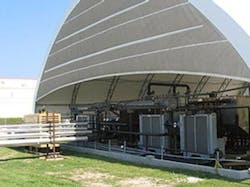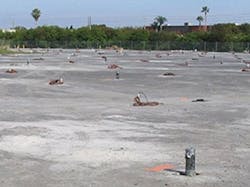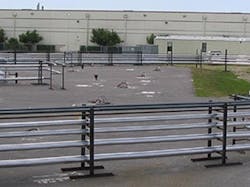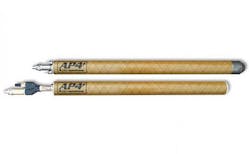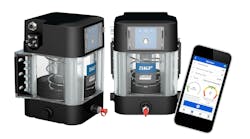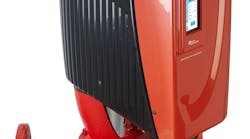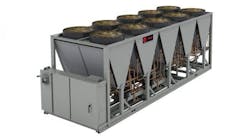Improving Outcomes for Thermally Enhanced NAPL Recovery
The site of a former U.S. Department of Energy (DOE) nuclear weapons production facility in Largo, Florida, also known as the Pinellas Plant, posed an extreme challenge for groundwater remediation pumps. Soil and surficial aquifers at the site, now known as the Young-Rainey Science, Technology, and Research Center, were contaminated by large quantities of light and dense non-aqueous phase liquids (NAPLs). Trichloroethene, dichloroethene, ethylene chloride, toluene, and heavy oils were discovered, with very high concentrations in groundwater and substantial amounts of free product in both floating and sinking layers.
Because the site consisted of tight soils with a low hydraulic gradient, project engineers chose a combination of electric and steam-driven thermal techniques to enhance remediation. In this approach, the soil and aquifer are heated by electrical resistance to current from underground electrodes and by injection of superheated steam into the wells. High temperatures increase the mobility of viscous NAPLs; some components actually boil and can be removed as vapor. Dual phase extraction wells recover soil vapor by application of vacuum at the wellhead and liquid via down well pumps.
The first phase of the project employed a variety of pumps, including progressive cavity and sucker rod models. Significant operational and maintenance problems occurred, largely caused by ambient temperatures exceeding 212°F, aggressive chlorinated solvents, and high chloride levels. For the second remediation phase, consulting engineer Ed Tung of MK Environmental, Inc., a recognized authority on thermal remediation technology, specified AutoPump air-powered pumps from Q.E.D. With a cast stainless steel internal control mechanism, high-clearance design, and rugged construction of specially-selected durable materials, these pumps thrive in harsh environments and are capable of pumping viscous, high-solids content liquids without clogging.
Twenty-three AutoPumps were installed at the Largo site, operating at flow rates between 2 and 5 GPM (2,880-7,200 GPD). Still, even for such extreme pumps, conditions in the wells proved to be difficult. However, the tough pumps provided superior reliability, and simple field maintenance procedures quickly returned failed pumps to service, reducing downtime and maximizing project efficiency. Cleanup of the site proceeded on schedule, and subsequent sampling verified that the remediation was successful, with post-treatment contaminant concentrations reaching project goals
